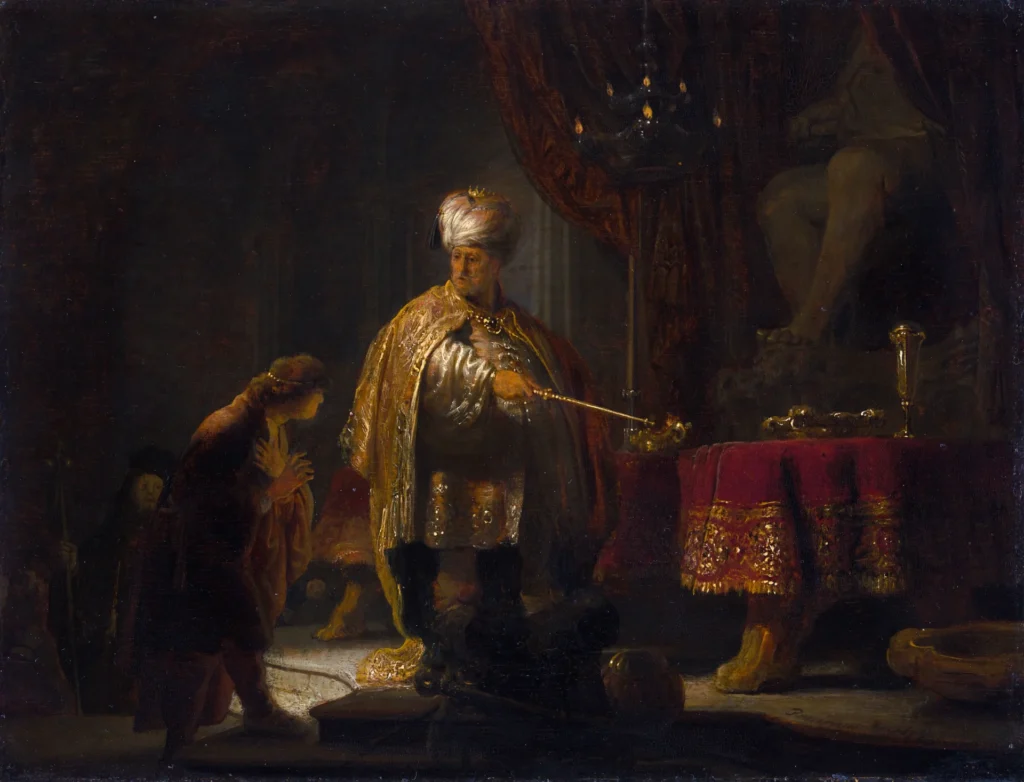Daniel and Cyrus Before the Idol Bel
Created in 1633, Daniel and Cyrus Before the Idol Bel is a mesmerizing oil painting by Rembrandt van Rijn that encapsulates a pivotal scene from the Book of Daniel. Measuring only 23.5 x 30.2 cm, the artwork effectively uses chiaroscuro to emphasize the dramatic contrast between the opulent King Cyrus and the humble figure of Daniel. The central moment depicts Daniel revealing the deception behind the idol worship, a theme that not only engages viewers with rich symbolism but also critiques the nature of false deities in a historical context.
Year 1633
About the Artwork
Did You Know
Liked what you see? Add it to your collection.
Enjoyed reading? Share it.
... continued
The artwork Daniel and Cyrus Before the Idol Bel by Rembrandt van Rijn, created in 1633, is a significant piece of religious art that depicts a dramatic scene from the apocryphal portion of the Book of Daniel.
Composition and Style
The painting is relatively small, measuring 23.5 x 30.2 cm (9.2 x 11.8 in), and is executed in oil on a wood panel. Despite its small size, it captures a powerful and emotionally charged moment. Rembrandt uses light and shadow effectively to highlight the figures of King Cyrus and Daniel, contrasting the grandeur of the king with Daniel's humility. Cyrus, centrally placed and lavishly attired, appears large and imposing, while Daniel, seen in profile, is depicted in a more modest and submissive posture.
Narrative
The scene shows King Cyrus of Persia questioning Daniel about his refusal to worship the idol Bel. Daniel explains that he worships a living God, not a man-made idol like Bel. When Cyrus points out that Bel consumes food and wine offerings every night, Daniel reveals that the priests of Bel secretly eat the offerings through a hidden entrance. This deception is exposed when Daniel has the temple floor covered with ash, revealing the footprints of the priests. The painting captures the moment of this confrontation, with the worried faces of the priests in the background indicating their guilt.
Details and Symbolism
The painting features an opulent temple setting with a partially visible idol of Bel in the shadows. The use of light and the extravagant finery worn by Cyrus, along with the gold vessels on the velvet tablecloth, evoke the exotic mystery of a pagan cult. The tiny crown atop Cyrus’s turban is another fine detail that adds to the richness of the scene.
Location and Provenance
The painting is part of the collection at the J. Paul Getty Museum in Los Angeles, with the accession number 95.PB.15.
This work showcases Rembrandt's mastery of light effects and his ability to vividly depict biblical narratives, even within a small format.










